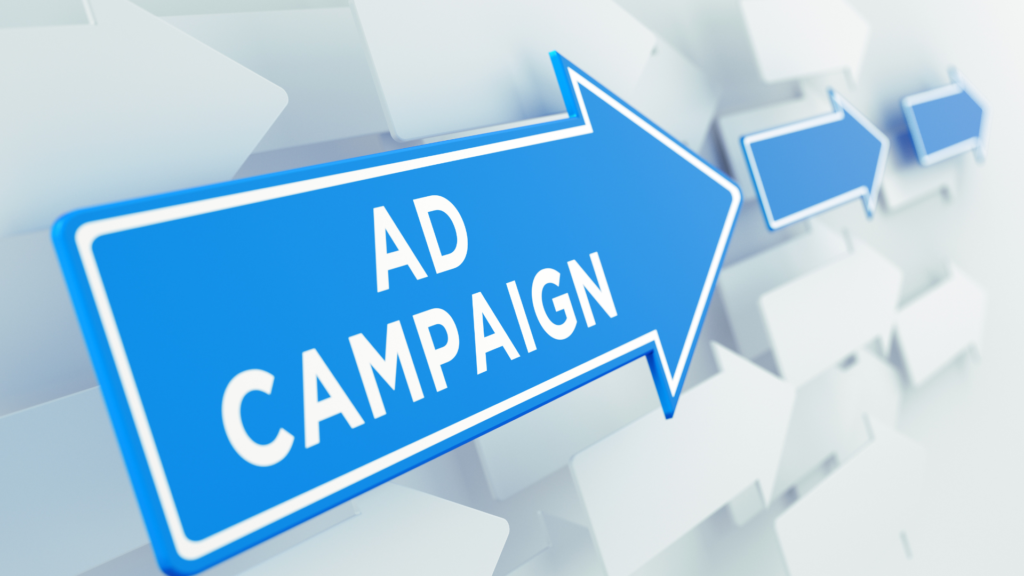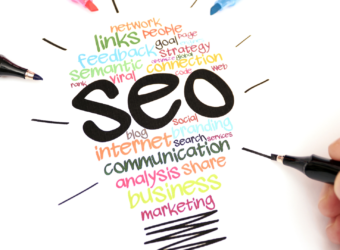Health Care Virtual Assistants
Quick Help VA specializes in virtual medical assistant services tailored for healthcare professionals. Our telehealth virtual assistants (VAs) excel in coordinating telehealth visits, patient follow-ups, and managing medical files and transcriptions. With backgrounds in nursing and related medical fields, our VAs are equipped to handle the specialized tasks crucial for clinics and medical units.

What a Health Care Virtual Assistant Can Do for You

Hiring a virtual assistant for your medical practice offers numerous benefits. They can enhance service quality and support business growth by providing essential services such as administrative tasks, patient scheduling, and handling medical records efficiently.
Administrative Services
Quick Help VA ensures smooth operations in the healthcare industry by managing essential administrative tasks. Our medical virtual assistants maintain organized documents, coordinate appointments efficiently, and more, ensuring your clinic or hospital runs seamlessly.
Marketing Services
Promote disease awareness and encourage patient engagement with Quick Help VA's marketing services. Our virtual assistants create compelling promotional materials to enhance your healthcare facility's outreach efforts.
Prospecting Services
Grow your practice with Quick Help VA's prospecting services. Our virtual assistants help healthcare professionals find new patients, saving time and energy typically spent on prospecting efforts.
Customer Services
Provide compassionate customer service with Quick Help VA's virtual medical assistants. They support patients and their families during stressful situations, offering assistance and answering inquiries with care and professionalism.
Name
Lorem ipsum dolor sit amet, consectetur adipiscing elit. Ut elit tellus, luctus nec ullamcorper mattis, pulvinar dapibus leo.
Name
Lorem ipsum dolor sit amet, consectetur adipiscing elit. Ut elit tellus, luctus nec ullamcorper mattis, pulvinar dapibus leo.
Name
Lorem ipsum dolor sit amet, consectetur adipiscing elit. Ut elit tellus, luctus nec ullamcorper mattis, pulvinar dapibus leo.
Name
Lorem ipsum dolor sit amet, consectetur adipiscing elit. Ut elit tellus, luctus nec ullamcorper mattis, pulvinar dapibus leo.
Name
Lorem ipsum dolor sit amet, consectetur adipiscing elit. Ut elit tellus, luctus nec ullamcorper mattis, pulvinar dapibus leo.
Testimonials

Loni Mayse
Founder
QuickHelp VA has been an absolute game-changer for our business! Their social media management service is top-notch, delivering consistent and engaging content that resonates with our audience. Our online presence has significantly grown, thanks to their strategic planning and creative execution. The team's professionalism and dedication have exceeded our expectations, making them an invaluable partner in our digital marketing efforts. We highly recommend QuickHelp VA for anyone looking to elevate their social media game!

John McCabe
Founder and CEO
QuickHelp VA has transformed our social media presence with their outstanding management service. Their strategic content and professional approach have significantly boosted our engagement and online visibility. Highly recommended!

Takisha Motley
Founder | CEO | Real Estate Broker, EXP Realty
Partnering with Quick Help VA has been a game-changer for our real estate business. Their team seamlessly handled our social media management, skip tracing, and data entry, which freed up our time to focus on client engagements and closing deals. Their proficiency in appointment setting, CRM maintenance, and customer communications ensured we never missed an opportunity and kept our clients happy.

Jack Victor
Founder | CEO | Real Estate Broker, Land Factory Usa
Quick Help VA has transformed our B2B real estate operations. Their expertise in managing our social media, skip tracing, and data entry allowed us to concentrate on building client relationships and closing deals. Their appointment setting, CRM maintenance, and customer communication services were exceptional, connecting us with high-quality leads and ensuring client satisfaction.

Austin Tydings
Founder | CEO | Real Estate Broker, Road Stead Realty, Simple Home Solution, 757 Cashover
I have been working with QuickHelp Virtual Assistants for over a year and a half now, and they have been a game-changer. I have three virtual assistants on my team, and they're all amazing people. They're very accommodating, allowing you to start with one and scale up from there. I plan on growing even more in the future. They started out in part-time roles and then moved to full-time roles, which helped tremendously as a small business owner with limited funds and allowed me to grow at a good pace. I would highly recommend QuickHelp VA to anyone looking to scale their business or just needing an extra hand. They offer a wide variety of services, not just in real estate, but in many other areas too.

Andy Rivera
Founder of M2LV | CEO
Quick Help VA has been a game-changer for our real estate business. Their expertise in managing our social media, skip tracing, and data entry allowed us to focus on closing deals. Their appointment setting, CRM maintenance, and customer communication services were top-notch, connecting us with quality leads and keeping our clients satisfied.

Udi Danino
Owner / Founder | Eco Green Dallas
Quick Help VA has been invaluable to our home improvement and real estate business. Their team expertly managed our social media, skip tracing, and data entry, allowing us to concentrate on our projects and client interactions. Their appointment setting, CRM maintenance, and customer communication services ensured we stayed connected with our clients and never missed a lead.
3D Process
Discover

Discuss

Delegate
Our Services

Social Media Management
Social Media Management involves creating content, engaging with audiences, and analyzing performance on platforms like Facebook and Instagram to boost brand awareness and support business goals.

Facebook Ads
Facebook Ads are targeted ads on Facebook designed to reach specific audiences and drive traffic, leads, and sales.

Google Ads
Google Ads are online advertisements that appear on Google search results and partner websites, targeting users based on keywords and demographics to drive traffic, leads, and sales.

B2B Appointment Setting
B2B Appointment Setting involves scheduling meetings between businesses and potential clients, using outbound calls, emails, and LinkedIn to generate leads and secure appointments for sales teams.

Administrative Tasks
Administrative Tasks include essential office duties such as managing schedules, handling correspondence, organizing files, data entry, and maintaining records to support efficient business operations.

Inside Sales + Prospecting
Inside Sales & Prospecting involves reaching out to potential clients, identifying leads, and nurturing relationships through calls, emails, and social media to drive sales and generate business opportunities.
Latest Blog

5 Affordable Marketing Strategies to Boost Your Business Growth
Before exploring the most cost-effective marketing methods to generate income for your company, it’s essential to understand what makes your products or services unique.
As a business owner, having a product or service with a distinguishing feature or a compelling value is crucial. The USP, or unique selling proposition, of a product can naturally promote your business without additional costs. This intrinsic value can significantly reduce your marketing expenses, as clients who find your product unique will share it with others.

Now, let’s explore some affordable marketing strategies, including free and low-effort options, to grow your business.
Let’s start with some completely free marketing ideas:
- Create a Google Business Profile and Verify Your Ownership – Establishing a free Google Business Profile is one of the initial steps to make your business known. This is especially effective for local businesses, as it ensures your presence in business listings, allowing potential customers to find you when searching for products or services in your sector.
To ensure your business profile appears at the top of local search results on Google Maps, it needs to be verified and optimized.
- Open a Social Media Account for Your Business With approximately 3.5 billion social media users worldwide, creating a business account on platforms like Instagram, Facebook, Twitter, LinkedIn, and YouTube presents a fantastic opportunity to market your business for free.
Actively posting on your social media profiles helps build your brand identity and establish strong trust among your followers. Here are some tips for effectively using social media to promote your business:
- Educate with Videos: Create videos to inform your audience about your products or services. Ensure the content is engaging rather than overly promotional to avoid deterring potential customers.
- Promote Your Blog: Use social media to share your blog posts and drive traffic to your website.
- Share Stories: Post user experiences on Facebook and Instagram stories to build credibility.
- Leverage Trends: Make videos with trending music for Reels and TikTok to attract more followers. Collaborate with influencers whose audiences align with your target demographic by creating remix videos.
- Engage Visually: Share visually appealing and informative content to capture your audience’s interest and encourage interaction.
- Use Hashtags: Employ relevant hashtags to reach more potential customers in your niche.
- Collaborate with Influencers: Utilize top influencer search tools to find Instagram influencers in your niche and reach out for partnerships to expand your network and increase your page visibility.
- Make a Website and Begin a Blog Creating a website and starting a blog is one of the most effective ways to establish an online presence. A blog can help you drive traffic to your website and promote your brand by providing valuable stories and information that users seek.
To maximize engagement, keep the following tips in mind:
- Concise and Useful Content: Avoid long, essay-like posts. Instead, focus on providing useful and comprehensive information.
- Infographic Content: Utilize infographics to engage your readers. Infographics are visually appealing and can effectively convey complex information.
- Visuals Over Text: With the increasing preference for videos and visuals over text, incorporating eye-catching graphics can capture your users’ interest and reduce your bounce rate.
- Frequent Updates: Regularly update your blog with diverse topics relevant to your niche to keep your audience engaged and informed.
4. Email Marketing Campaign Email marketing is an excellent way to engage with new customers while maintaining long-term relationships with existing clients.
Effective email marketing strategies can yield impressive results. Here are some key tips and unconventional ideas to make the most of your email marketing efforts:
- Compelling Subject Lines: Create strong subject lines that capture attention and encourage recipients to open the email.
- Enticing Offers: Include compelling offers that prompt readers to take action, leading to high conversion rates.
- Performance Tracking: Monitor your email campaign’s performance and conduct A/B tests to identify which elements work best.
- UTM Tracking: Use UTM tracking URLs in your emails to accurately measure the performance of your campaigns.
Unconventional Email Marketing Ideas:
- Incentives for Sign-Ups: Offer additional discounts and coupons to website visitors to encourage them to sign up for your newsletter.
- Promotional Incentives: Send weekly promotional incentives to convert subscribers into paying customers.
- Utilize Free Email Marketing Tools: Take advantage of free email marketing tools and initiatives to maximize your reach without additional costs.
4. Establish a Customer Referral Program A customer referral program, where you reward existing customers for referring friends, family, or neighbors, is an exciting and effective marketing strategy. While it may come with some costs, it is well worth the investment.
People are more likely to trust and act on recommendations from those they know. Word-of-mouth marketing can provide you with loyal customers for a lifetime. An interesting fact about this approach is that customers are more likely to purchase a product or service if it is recommended by a friend or family member. Here are some tips for establishing a successful referral program:
- Offer Attractive Rewards: Provide appealing incentives for both the referrer and the new customer to encourage participation.
- Make It Easy: Ensure the referral process is simple and straightforward.
- Promote the Program: Regularly remind your customers about the referral program through various channels, such as email, social media, and your website.
- Track and Measure: Monitor the performance of your referral program and adjust it as needed to maximize effectiveness.
5. Launch an advertising campaign to boost your website traffic. If your budget allows, consider using Facebook ads to enhance conversions.
Pay-per-click (PPC) advertising is an efficient method to generate desired leads while being cost-effective. For e-commerce websites, Google ads can attract ready-to-buy customers, although this may increase your marketing expenses.
Get Started Right Away For Low-cost!
There are numerous budget-friendly marketing strategies to promote your business, and it’s up to you to choose the ones that will best drive your revenue growth.
In the beginning stages, small businesses can leverage free marketing methods and then reinvest the profits into implementing more of these affordable strategies.
Quick Help Virtual Assistant is a full-service digital marketing agency dedicated to helping businesses reach their goals. We focus on creating personalized, strategic plans tailored to your company’s objectives and budget. With over ten years of experience, we pride ourselves on delivering top-notch customer service and a hands-on approach to achieving your goals.
Our expertise includes search engine optimization (SEO), email marketing, social media management, website design and development, pay-per-click (PPC) advertising campaigns, and more.

Google Ads vs. Meta Ads: Which Platform Best Suits Your Business Needs?
You’ve got your business idea, launched your website, and now it’s time to get the word out.
Google and Meta are likely at the top of your list when it comes to online advertising. But is investing in ads really worth it? And if so, which platform should you choose?
In this article, we’ll explore the distinctions between Google Ads and Meta Ads, helping you make informed decisions for your future advertising strategy.

The Basics of Online Advertising
Entering the world of online advertising can feel overwhelming, particularly if you’re new to marketing. However, starting an ad campaign is more straightforward than it may seem. Let’s start by covering some key terms and concepts:
PPC (Pay-Per-Click)
Both Meta and Google ads fall under the category of “pay-per-click (PPC)” advertising. With PPC ads, you set a bid on a price, and you pay that amount each time someone clicks on one of your ads.
User Search Intent
This concept refers to the specific terms potential customers use when searching for your business. Why might they be searching on Meta instead of Google? What issue are they hoping to resolve by searching for a particular term?
Understanding a user’s search intent allows you to target ads more effectively. By anticipating their pain points, you can craft ads that directly address these concerns. When you understand a person’s problem, you can offer a solution—your product or service—through well-targeted ads.
User intent varies based on the platform and where they are in the sales funnel. Google’s algorithm increasingly prioritizes content that’s optimized for user intent rather than just keywords. Quality content is now more important than pages overloaded with questions and keywords.
CPC/CPA
Cost Per Click (CPC) is the amount you’ll pay to Meta or Google each time someone clicks on your ad. Cost Per Action (CPA), on the other hand, refers to the amount an advertiser pays when a user completes a specific action, such as making a purchase or signing up for an email list.
How Do Google Ads and Meta Ads Differ?
Both platforms come with their own set of advantages and disadvantages, and they each target audiences in unique ways. Depending on your objectives, you might choose to use both Meta and Google ads to maximize your reach and effectiveness.
Paid Search vs Paid Social:
Paid search involves paying for your ad to appear on a search engine results page (SERP). These ads are based on target keywords rather than audience interests. You create ads round industry-specific keywords that you believe potential customers are likely to search for. Understanding your audience’s intent can help you choose the most effective keywords.
Paid Social
Paid social ads are designed to get your brand in front of social media users. As platforms continually update their algorithms, it becomes increasingly difficult to achieve this organically. Paid ads allow you to bypass this challenge and reach your audience more directly.
When purchasing ads, it’s also crucial to consider the distribution network you’re tapping into. Both Google and Meta offer extensive reach.
Google’s network allows you to advertise across platforms like YouTube, Google Display Network, and even Google Maps. Meta, on the other hand, enables you to reach millions of Instagram users, deliver ads via Messenger, and place them directly in users’ news feeds. The ideal platform for your ads will depend on where your target customers are most active online.
Audience Size
Both Google and Meta boost massive user bases. Meta platforms, including Facebook, Instagram, WhatsApp, and Messenger, attract over 1.7 billion daily visitors, with more than three billion users in total.
Google, on the other hand, handles nearly six billion searches daily. Users are four times more likely to click on a paid Google ad compared to ads on other search engines, with Google controlling over 90% of all search activity across its properties.
When it comes to audience size, it’s essential to consider your product and where people are most likely to search for it. Is your product something people will search for on Google, or are they more likely to discover it through social media?
Even with Google’s 5.8 billion daily searches, it won’t benefit you if your target audience isn’t searching for your product there. Similarly, if you’re promoting something that’s unlikely to capture the interest of Meta users, Google might be the better choice. The key is to focus on where your target audience is most active.
Cost and Return on Investment (ROI)
The primary goal of purchasing ads is to generate a profit, or return on investment (ROI). How much ROI you achieve depends on the cost of your advertising efforts. Ideally, you want to maximize your reach without exhausting your entire budget.
Ad costs vary based on several factors, including the keywords you target, the platform you use, and the industry you’re in. On Google, the cost per click (CPC) for certain keywords can range from just over a dollar to more than fifty dollars.
Generally, Google ads tend to be more expensive than Meta ads. The average CPC for Google ads is around $2.69, whereas businesses in lower-cost industries, like apparel, might pay about $0.45 per click on Meta. However, if you choose to run an Instagram ad through Meta, be prepared to pay roughly double the cost of a standard Meta ad.
Industry plays a significant role in determining ad costs. For example, in the insurance sector, CPC can exceed $50. If you’re in an industry where Google’s CPCs are particularly high, you might consider starting with Meta ads instead.
CPC is just one aspect to consider. Another important metric is cost per action (CPA). How many clicks are you paying for, and how many of those clicks result in the desired action?
To ensure your ad costs are worthwhile, you need to determine how many conversions are required to achieve a positive ROI. If paying more for targeted ads leads to more paying customers, the investment is likely worth it in the long run.
Customer Intent
When choosing where to place your ads, consider the context in which potential customers will be searching for your services. Is your business one that people are more likely to discover through a web search, or does it lend itself better to social media?
For instance, if you own a mechanic shop, people are likely to search for a nearby mechanic when their car breaks down. In this case, a search ad can position you right in front of them at the exact moment they need your services.
On the other hand, if you run a photography business, social ads might be more effective. People could stumble upon your page while browsing and return later when they’re ready to book a session. Social ads work well for this type of business because, even if they don’t lead to immediate conversions, they help expand your audience over time.
Ultimately, it all comes down to understanding your potential customer’s intent. Whether you need to be available immediately when they have a problem or focus on building brand awareness, aligning your ad strategy with their intent is key.
Audience Targeting
Both Google and Meta offer highly granular targeting options for ads, allowing you to reach people based on factors such as geographic location, age, and income level.
While you might expect Google to excel in this area, Meta actually provides more detailed data. With Meta, you can segment your audience based on specific behaviors and interests, which are gathered from its vast user base.
If you’re a business owner who enjoys creating detailed customer personas, Meta ads allow you to target very specific demographics. This makes it an excellent option if your target audience is particularly niche and you want to tailor your ads to match their precise characteristics.
Available Ad Formats
Choosing the right ad format is crucial for effective targeted advertising. Consider what type of work your business excels at. For instance, if your products are visually appealing, like clothing or furniture, platforms such as Instagram might be ideal. Both Google and Meta offer various formats to explore.
Google Ads
Google’s search ads are primarily text-based, so they rely on compelling copy to capture attention. You can enhance these ads with extensions at no additional cost to improve clickthrough rates. Some examples of Google ad extensions include:
- Dynamic Site Links: Links to specific sections of your site, like menu or about us pages.
- Call-to-Action Options: Features like a “call this business” button.
- Structured Snippets: Brief descriptions and links that provide more context.
These extensions can be manually set up or automatically displayed by Google’s algorithm to boost ad performance.
Meta Ads
Meta ads, in contrast, are much more visually engaging. You can use eye-catching images and video content to draw attention. Although Google also offers video ads through YouTube, Meta provides a variety of visual ad formats, including:
- Carousels: Multiple images or videos that users can swipe through.
- Single Images: High-quality photos to showcase your product.
- Video Ads: Short clips to capture and hold attention.
Visual content is highly effective, with image-based ads receiving 94% more views than text-based ones. For businesses like eCommerce sites, Meta’s visual ad formats can be particularly beneficial in increasing brand awareness. For example, a freelance photographer might use Meta ads to share captivating images and short videos, drawing people to their page and encouraging them to follow for updates.
Additional Considerations for Google Ads vs. Meta Ads
Now that you have a good understanding of what each platform offers, there are a few more factors to consider before making your decision.
Campaign Goals
First, define the goal of your ad campaign. If your focus is on building a community and enhancing brand awareness, Meta may be the better choice. Conversely, if your goal is to attract local customers, Google ads can help increase your visibility in “near me” searches.
Sales Funnel Stage
Consider where potential customers are in the sales funnel when they encounter your ads. For instance, if you’re a mechanic aiming to boost sales by attracting more customers, Google ads are likely more effective since people searching for mechanics are usually ready to make a purchase.
Product or Service Maturity
The maturity of your product or service also plays a role. For new or niche products that are not widely known yet, like ride-sharing before it became popular, Google ads might not be as impactful.
Final Thoughts
When choosing between Google Ads and Meta Ads, weigh various factors such as your product or service, business model, and sales strategy. Ensure you’re maximizing your advertising spend to achieve the best results.
Evaluate your goals, budget, and target audience when planning your campaign. Experimenting with both types of advertising can help determine which one aligns best with your objectives. Additionally, combining Google and Meta ads could provide a comprehensive approach to reaching your target audience effectively.

12 Essential SEO Tips to Boost Your Search Engine Ranking
To advertise your website successfully, implementing a robust SEO strategy is essential. This approach will enhance your website’s SEO performance and increase your visibility in Google search results. Here are some key tips to help you assess your website’s SEO ranking and achieve a top position.

How Can You Enhance Your SEO Ranking?
Consider hiring a search engine optimization company to boost your conversion rates. By doing so, you’ll ensure your website remains optimized and enhances its visibility in search engine results. This means your products will have a better chance of reaching potential buyers, and you’ll attract high-quality traffic to your site.
Remember, some of the strategies mentioned below should be implemented consistently, while others may only need attention every six months. The key to success is to continuously monitor your website’s performance and ensure it is fully optimized. Regularly reviewing your SEO ranking metrics is crucial for this process.
- Utilize Google Analytics to Monitor Metrics
Google Analytics is a powerful tool for enhancing your website’s SEO. It allows you to track and analyze website activity, which can contribute to better rankings on Google. The platform provides valuable insights into traffic trends, showing how visits have increased or decreased and what happens when users come from different search engines.
Through Google Analytics, you can also gain insights into visitors arriving from organic search results, which can be quite revealing. By monitoring website conversions, you can see how these visits start to convert, providing encouraging evidence that your SEO strategy is effective.
- Enhance Mobile Page Speeds
With smartphones becoming a primary method for accessing the internet, optimizing mobile page speed is crucial for improving your SEO ranking. To boost mobile page performance, start by removing unnecessary plugins, files, media, and themes from your server. Next, consider using reputable plugins and themes to ensure better speed and efficiency. Additionally, reviewing and upgrading your site’s hosting plan can further enhance mobile page speeds.
- Ensure Your Website Is Accessible
Website accessibility affects not just visitor experience and search engine rankings, but also your revenue potential. To prevent accessibility issues, focus on several key areas: use appropriate tags and color contrasts, incorporate large fonts, provide clear and easy-to-use contact forms, and include supportive language throughout your site. An accessible website removes barriers, making it easier for everyone to navigate and use your platform effectively. This is a crucial aspect of website optimization to consider.
- Optimize Your Images
To enhance your website’s SEO ranking, optimizing your media content is essential. Large images can significantly impact page speed, so consider using lightweight image formats or resizing them to reduce their file size. Additionally, apply image compression techniques to improve website loading times, boost conversion rates, and positively affect your SEO ranking.
- Create High-Quality Content
High-quality content plays a crucial role in boosting your SEO ranking. Ensure your content is well-written, error-free, and engaging to leave a positive impression on visitors. The content should captivate your audience, encouraging them to spend more time on your site and familiarize themselves with your products. Producing valuable, high-quality content will significantly enhance your search engine rankings.
- Structure Your Content Effectively
To make your website’s content stand out, ensure it is easy to read and navigate. Use short, clear sentences and organize them into well-defined paragraphs. Incorporate heading tags every few hundred words and highlight key sentences by bolding them. These practices make your content more user-friendly and engaging, improving readability and encouraging visitors to respond to your calls to action.
- Craft Compelling Title Tags and Meta Descriptions
Title tags and meta descriptions are crucial for attracting clicks from search engine results. While they don’t need to be clickbait, they should be engaging and compelling enough to encourage clicks. Use tools like CoSchedule’s Headline Studio or Mangools’ SERP Simulator to refine your meta descriptions and headings for maximum impact.
- Identify and Use Relevant Keywords
Choosing the right keywords for each page is vital for effective SEO. Focus on keywords that are relevant to your content, align with your brand, and benefit your audience. Use Google Keyword Planner to identify the best keywords for your pages. Ensure these keywords appear in title tags, headings, meta descriptions, and throughout your content, including the introduction and conclusion.
- Leverage Reliable Internal Links
A strong internal linking structure enhances navigation and boosts SEO. Include internal links and buttons across your content to guide visitors smoothly through your site. This practice not only helps users find relevant information but also supports better search engine rankings.
- Acquire High-Quality Backlinks
High-quality backlinks from reputable sites are essential for SEO success. Ensure your backlinks come from trustworthy sources to improve your site’s authority and ranking. Avoid links from low-reputation sources, as they can negatively impact your site’s credibility. Quality backlinks signal to Google that your site is reliable and valuable.
- Set Up a Google My Business Page
Creating a Google My Business page offers several benefits, including local business visibility on Google Maps and improved search rankings. You can also gather customer reviews and showcase qualitative visuals, which help establish authority and enhance your business’s presence in search results.
- Monitor Google Search Console
Regularly checking Google Search Console provides valuable insights into your website’s SEO performance. It offers data on issues like mobile usability, security, and indexing. By reviewing this information, you can better understand your site’s overall performance and identify areas for improvement.
Get Started Today!
Quick Help Virtual Assistant is a full-service digital marketing agency dedicated to helping businesses achieve their goals. With over a decade of experience, we specialize in crafting personalized, targeted strategies that align with your company’s objectives and budget. Our services include:
- Search Engine Optimization (SEO)
- Email Marketing
- Social Media Management
- Website Design & Development
- Pay-Per-Click (PPC) Advertising Campaigns
- And more
We pride ourselves on exceptional customer service and a hands-on approach to driving your success. Reach out to us to start your journey towards achieving your marketing goals.



